Rigid
In biology, the term "rigid" is used to describe a structure or substance that is stiff, inflexible, and resistant to bending or deformation. Rigid structures are important in maintaining the shape and integrity of cells, tissues, and organisms.
Study Guide
- Definition: Rigid refers to a structure or substance that is stiff, inflexible, and resistant to bending or deformation.
- Examples in Biology: The cell wall of plant cells is a rigid structure that provides support and protection. The bones in vertebrate skeletons are rigid and provide structural support.
- Importance: Rigid structures are essential for maintaining the shape and integrity of cells, tissues, and organisms. They provide support, protection, and allow for specialized functions.
- Adaptations: Some organisms have evolved rigid structures as adaptations to specific environments. For example, the exoskeleton of arthropods provides rigid external support and protection.
- Related Concepts: Rigid structures are related to concepts such as biomechanics, structural support, and the maintenance of shape and form in living organisms.
- Study Tips: When studying rigid structures in biology, it can be helpful to visualize and compare different types of rigid structures, such as the cell walls of plants and the bones of animals. Understanding the functions and adaptations of rigid structures will also aid in comprehension.
◂Biology Worksheets and Study Guides High School. Introduction to animals
Worksheet/Answer key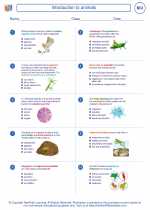 Introduction to animals
Introduction to animals  Worksheet/Answer key
Worksheet/Answer key Introduction to animals
Introduction to animals  Worksheet/Answer key
Worksheet/Answer key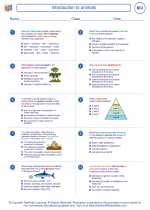 Introduction to animals
Introduction to animals  Worksheet/Answer key
Worksheet/Answer key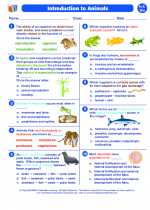 Introduction to animals
Introduction to animals  Vocabulary/Answer key
Vocabulary/Answer key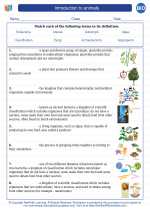 Introduction to animals
Introduction to animals  Vocabulary/Answer key
Vocabulary/Answer key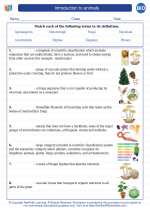 Introduction to animals
Introduction to animals  Vocabulary/Answer key
Vocabulary/Answer key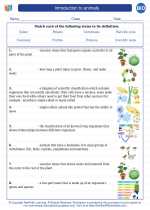 Introduction to animals
Introduction to animals 

 Worksheet/Answer key
Worksheet/Answer key
 Worksheet/Answer key
Worksheet/Answer key
 Worksheet/Answer key
Worksheet/Answer key
 Vocabulary/Answer key
Vocabulary/Answer key
 Vocabulary/Answer key
Vocabulary/Answer key
 Vocabulary/Answer key
Vocabulary/Answer key

The resources above cover the following skills:
Concepts of Life Science (SC1, SC2, SC3)
The student demonstrates an understanding of the structure, function, behavior, development, life cycles, and diversity of living organisms by describing the structure-function relationship